Introduction to Istio
Decoupling at Layer 5


Girish Ranganathan


Ayrat
Khyretdinov
What is a Service Mesh?
a dedicated layer for managing service-to-service communication
So, a microservices platform?
obviously.
Orchestrators don't bring all that you need
and neither do service meshes,
but they do get you closer.
partially.
a services-first network
What is Istio?
an open platform to connect, manage, and secure microservices
-
Observability
-
Resiliency
-
Traffic Control
-
Security
-
Policy Enforcement


@IstioMesh
Observability
what gets people hooked on service metrics
Goals
-
Metrics without instrumenting apps
-
Consistent metrics across fleet
-
Trace flow of requests across services
-
Portable across metric back-end providers
You get a metric! You get a metric! Everyone gets a metric!
© 2018 SolarWinds Worldwide, LLC. All rights reserved.

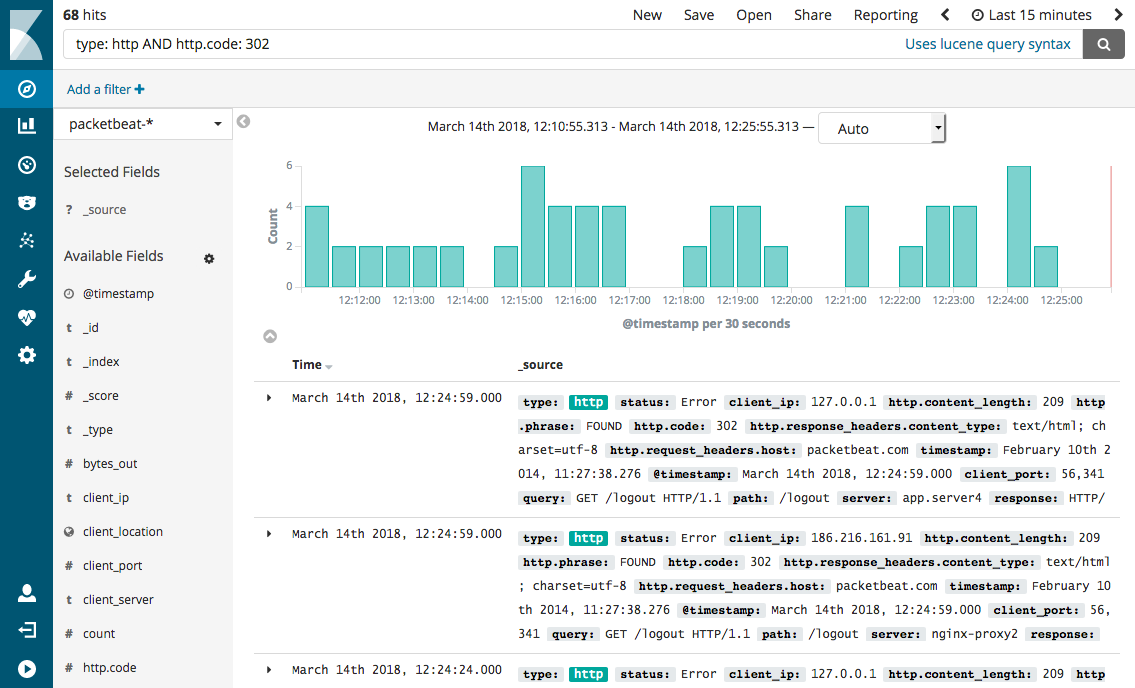
Traffic Control
control over chaos
- Traffic splitting
- canary rollouts
- percentage-based traffic splits
- Traffic steering
- Look at the contents of a request and route it to a specific set of instances.
- Ingress and egress routing
Resilency
- Systematic fault injection
-
Timeouts and Retries
-
Control connection pool size and request load - rate limiting
-
Circuit breakers and Health checks
content-based traffic steering
Missing: application lifecycle management, but not by much
Missing: distributed debugging; provide nascent visibility (topology)
The Service Mesh Community

Join Slack http://slack.layer5.io
[Optional] Subscribe to newsletter https://layer5.io/subscribe

Prereq
Confirm Prerequisites
-
Start Docker Desktop, Minikube or other.
(either single-node or multi-node clusters will work) -
Verify that you have a functional Docker environment by running :
$ docker run hello-world
Unable to find image 'hello-world:latest' locally
latest: Pulling from library/hello-world
1b930d010525: Pull complete
Digest: sha256:0e11c388b664df8a27a901dce21eb89f11d8292f7fca1b3e3c4321bf7897bffe
Status: Downloaded newer image for hello-world:latest
Hello from Docker!Docker and Kubernetes

Prereq
Prepare Docker Desktop
Ensure your Docker Desktop VM has 4GB of memory assigned.
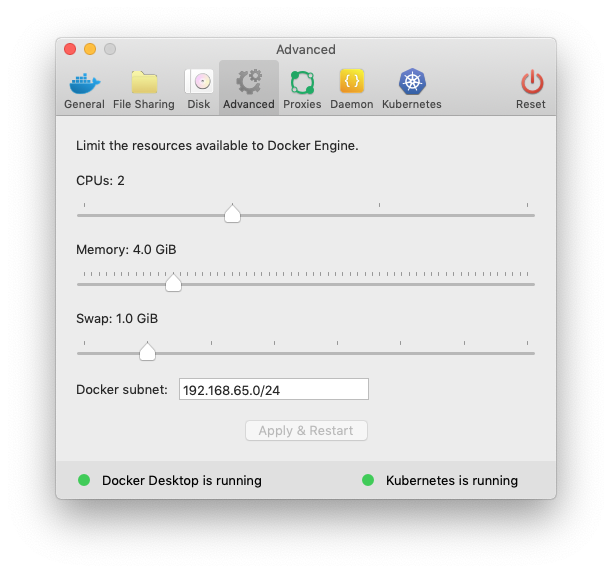
Ensure Kubernetes is enabled.
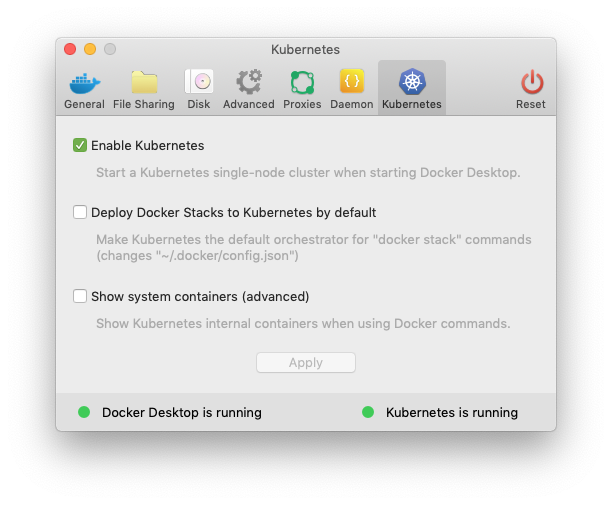

Prereq
Deploy Kubernetes
- Confirm access to your Kubernetes cluster.
$ kubectl version --short
Client Version: v1.14.1
Server Version: v1.14.1$ kubectl get nodes
NAME STATUS ROLES AGE VERSION
docker-desktop Ready master 10m v1.14.1
Prereq
v1.9 or higher
layer5.io/meshery
Deploy Management Plane
Management
Plane
Provides expanded governance, backend system integration, multi-mesh, federation, expanded policy, and dynamic application and mesh configuration.
Control Plane
Data Plane
sudo curl -L https://git.io/meshery -o /usr/local/bin/meshery
sudo chmod a+x /usr/local/bin/meshery
meshery start- Install Meshery

Prereq
Relating to
Service Meshes
Which is why...
I have a container orchestrator.

Core
Capabilities
-
Cluster Management
-
Host Discovery
-
Host Health Monitoring
-
-
Scheduling
-
Orchestrator Updates and Host Maintenance
-
Service Discovery
-
Networking and Load Balancing
-
Stateful Services
-
Multi-Tenant, Multi-Region
Additional
Key Capabilities
-
Application Health and Performance Monitoring
-
Application Deployments
-
Application Secrets

minimal capabilities required to qualify as a container orchestrator
Service meshes generally rely on these underlying layers.
Which is why...
I have an API gateway.
Microservices API Gateways
-
Ambassador uses Envoy
-
Kong uses Nginx
-
OpenResty uses Nginx
north-south vs. east-west

Which is why...
I have client-side libraries.
Enforcing consistency is challenging.
Foo Container
Flow Control
Foo Pod
Go Library
A v1
Network Stack
Service Discovery
Circuit Breaking
Application / Business Logic
Bar Container
Flow Control
Bar Pod
Go Library
A v2
Network Stack
Service Discovery
Circuit Breaking
Application / Business Logic
Baz Container
Flow Control
Baz Pod
Java Library
B v1
Network Stack
Service Discovery
Circuit Breaking
Application / Business Logic
Retry Budgets
Rate Limiting
Why use a Service Mesh?
to avoid...
-
Avoid bloated service code
-
Duplicating work to make services production-ready
-
Load balancing, auto scaling, rate limiting, traffic routing...
-
-
Inconsistency across services
-
Retry, tls, failover, deadlines, cancellation, etc., for each language, framework
-
Siloed implementations lead to fragmented, non-uniform policy application and difficult debugging
-
-
Diffusing responsibility of service management
What do we need?
• Observability
• Logging
• Metrics
• Tracing
• Traffic Control
• Resiliency
• Efficiency
• Security
• Policy
...a Service Mesh
North star is and has always been applications.
We're concerning less about infrastructure and focusing more on applications.
DEV
OPS
Decoupling at Layer 5
where Dev and Ops meet
Problem: too much infrastructure code in services
Help with Modernization
-
Can modernize your IT inventory without:
-
Rewriting your applications
-
Adopting microservices, regular services are fine
-
Adopting new frameworks
-
Moving to the cloud
-
address the long-tail of IT services
Get there for free
Service Mesh Architectures
Service Mesh Architecture
Data Plane
- Touches every packet/request in the system.
- Responsible for service discovery, health checking, routing, load balancing, authentication, authorization, and observability.
Ingress Gateway
Egress Gateway
Service Mesh Architecture
No control plane? Not a service mesh.
Egress Gateway
Control Plane
Data Plane
- Touches every packet/request in the system.
- Responsible for service discovery, health checking, routing, load balancing, authentication, authorization, and observability.
- Provides policy, configuration, and platform integration.
- Takes a set of isolated stateless sidecar proxies and turns them into a service mesh.
- Does not touch any packets/requests in the data path.
Ingress Gateway
Service Mesh Architecture
Control Plane
Data Plane
- Touches every packet/request in the system.
- Responsible for service discovery, health checking, routing, load balancing, authentication, authorization, and observability.
- Provides policy, configuration, and platform integration.
- Takes a set of isolated stateless sidecar proxies and turns them into a service mesh.
- Does not touch any packets/requests in the data path.
You need a management plane.
Ingress Gateway
Egress Gateway
Management
Plane
- Provides governance, multi-mesh and multi-cluster management, backend system integration, expanded policy and application integration.
layer5.io/landscape
Our service mesh of study: Istio
Pilot
Citadel
Mixer
Control Plane
Data Plane
istio-system namespace
policy check
Foo Pod
Proxy Sidecar
Service Foo
tls certs
discovery & config
Foo Container
Bar Pod
Proxy Sidecar
Service Bar
Bar Container
Out-of-band telemetry propagation
telemetry
reports
Control flow during request processing
application traffic
Application traffic
application namespace
telemetry reports
Istio Architecture

Galley
Ingress Gateway
Egress Gateway
Service Proxy Sidecar
- A C++ based L4/L7 proxy
- Low memory footprint
- In production at Lyft™
Capabilities:
- API driven config updates → no reloads
- Zone-aware load balancing w/ failover
- Traffic routing and splitting
- Health checks, circuit breakers, timeouts, retry budgets, fault injection…
- HTTP/2 & gRPC
- Transparent proxying
- Designed for observability
the included battery
Data Plane
Pod
Proxy sidecar
App Container


What's Pilot for?
provides service discovery to sidecars
manages sidecar configuration
Pilot
Citadel
the head of the ship
Mixer
istio-system namespace
system of record for service mesh



}
provides abstraction from underlying platforms
Galley
Control Plane
What's Mixer for?
an attribute-processing and routing machine
operator-focused
- Precondition checking
- Quota management
- Telemetry reporting
Pilot
Citadel
Mixer
istio-system namespace
Galley
Control Plane
- Point of integration with infrastructure backends
- Intermediates with infra backends & host env. (abstraction)
- under operator control
- Enables platform & environment mobility
- Responsible for policy evaluation and telemetry reporting
- Provides granular control over operational policies and telemetry
- Has a rich configuration model
- Intent-based config abstracts most infrastructure concerns
-
Highly extensible through adapters
- general purpose plug-in model
AppOptics™
- Uses pluggable adapters to extend its functionality
- Mixer process communicates with Adapters over gRPC
- Adapters are modules that interface to infrastructure backends
- (logging, metrics, quotas, etc.)
- Multi-interface adapters are possible
- (e.g., SolarWinds® adapter sends logs and metrics)
Mixer Adapters
types: logs, metrics, access control, quota
Papertrail™
Prometheus™



Stackdriver™
Open Policy Agent
Grafana™
Fluentd
Statsd
®

Pilot
Citadel
Mixer
istio-system namespace
Galley
Control Plane
Mixer
Mixer
Control Plane
Data Plane
istio-system namespace
Foo Pod
Proxy sidecar
Service Foo
Foo Container
Out-of-band telemetry propagation
Control flow during request processing
application traffic
application traffic
application namespace
telemetry reports



an attribute processing engine
What's Citadel for?
-
Verifiable identity
- Issues certs
- Certs distributed to service proxies
- Mounted as a Kubernetes secret
- Secure naming / addressing
- Traffic encryption
security at scale
security by default
Orchestrate Key & Certificate:
- Generation
- Deployment
- Rotation
- Revocation
Pilot
Citadel
Mixer
istio-system namespace
Galley
Control Plane

Q&A
Download and Deploy Istio Resources
- Download Istio package
- Start Meshery
- Install Istio
github.com/layer5io/istio-service-mesh-workshop

Lab 1
Load Generation
a multi-service mesh management plane


Service Mesh Interface (SMI)
Lab 1
@layer5
Meshery
Configuration
Security
Telemetry
Control Plane
Data
Plane
service mesh ns
Foo Pod
Proxy Sidecar
Service Foo
Foo Container
Bar Pod
Proxy Sidecar
Service Bar
Bar Container
Out-of-band telemetry propagation
Control flow
application traffic
http / gRPC
Application traffic
application namespace
Meshery Architecture
Ingress Gateway
Egress Gateway

Management
Plane
meshery
adapter
gRPC
kube-api
kube-system





Q&A

Break
Deploy Sample App
- Multi-language, multi-service application
- Verify install
github.com/layer5io/istio-service-mesh-workshop

Lab 2
BookInfo Sample App
Reviews v1
Reviews Pod
Reviews v2
Reviews v3
Product Pod
Details Container
Details Pod
Ratings Container
Ratings Pod

Product Container
Reviews Service
Ratings Service
Details Service
Product Service
BookInfo Sample App on Service Mesh
Reviews v1
Reviews Pod
Reviews v2
Reviews v3
Product Pod
Details Container
Details Pod
Ratings Container
Ratings Pod

Product Container
Envoy sidecar
Envoy sidecar
Envoy sidecar
Envoy sidecar
Envoy sidecar
Reviews Service
Enovy sidecar
Envoy ingress







Product Service
Ratings Service
Details Service
Access BookInfo via Istio Ingress Gateway
- Inspecting the Istio Ingress Gateway
- Access Bookinfo via Istio Ingress Gateway
- Inspect the Istio proxy of the productpage pod
Istio ingress gateway

application traffic
Lab 3
github.com/layer5io/istio-service-mesh-workshop
Metrics
Mixer
Control Plane
Data Plane
istio-system namespace
Foo Pod
Proxy sidecar
Service Foo
Foo Container
Out-of-band telemetry propagation
Control flow during request processing
application traffic
application traffic
application namespace
telemetry reports

Lab 4
- Expose services with NodePort
- Find port assigned to Prometheus
Metrics Dashboard
Grafana
Lab 4
- Expose services with NodePort
- Find port assigned to Grafana
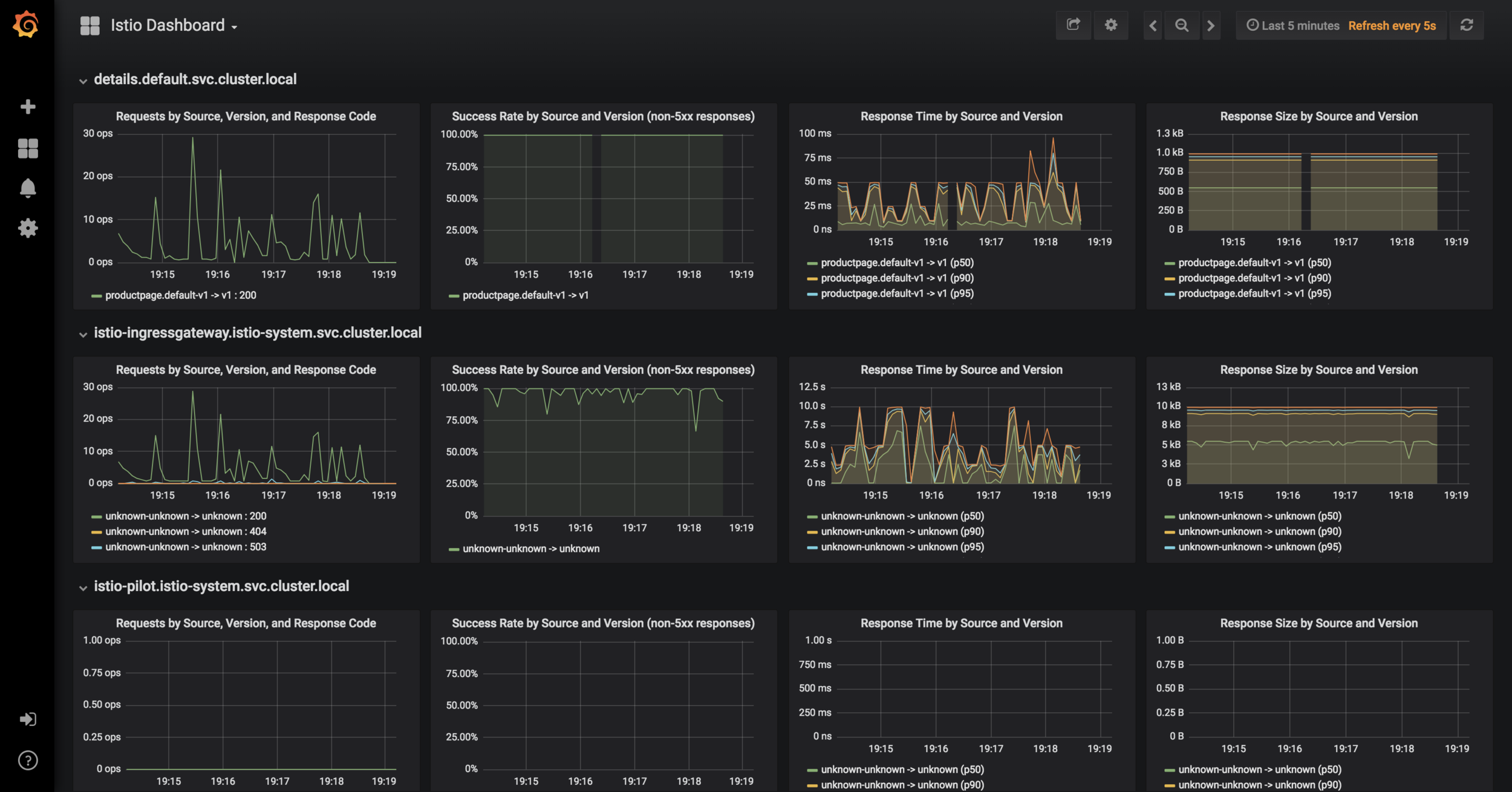
github.com/layer5io/istio-service-mesh-workshop

Lab 4
Distributed Tracing
Jaeger
github.com/layer5io/istio-service-mesh-workshop
Distributed Tracing
Jaeger
The istio-proxy collects and propagates the following headers from the incoming request to any outgoing requests:
- x-request-id
- x-b3-traceid
- x-b3-spanid
- x-b3-parentspanid
- x-b3-sampled
- x-b3-flags
- x-ot-span-context
Lab 4
- Expose services with NodePort
- Find port assigned to Jaeger
github.com/layer5io/istio-service-mesh-workshop
Request Routing and Canary Testing
- Configure the default route for all services to V1
- Content based routing
- Canary Testing - Traffic Shifting
Lab 5
Timeouts & Retries
Web
Service Foo
Timeout = 600ms
Retries = 3
Timeout = 300ms
Retries = 3
Timeout = 900ms
Retries = 3
Service Bar
Database
Timeout = 500ms
Retries = 3
Timeout = 300ms
Retries = 3
Timeout = 900ms
Retries = 3
Fault Injection and Rate-Limiting
- Inject a route rule to create a fault using HTTP delay
- Inject a route rule to create a fault using HTTP abort
- Verify fault injection

Lab 6
Circuit Breaking
- Initial test calls from client to server
- Time to trip the circuit
Lab 7
github.com/layer5io/istio-service-mesh-workshop
Mutual TLS & Identity Verification
- Verify mTLS
- SPIFFE

Lab 8
github.com/layer5io/istio-service-mesh-workshop

Q&A
the Service Mesh Community

Layer5.io
Meshery
layer5.io/subscribe

Q&A

Break

Q&A
Download and Deploy Istio Resources
- Download Istio
- Familiarize with `istioctl`
- Install Istio custom resources
- Verify custom resource installation
github.com/layer5io/istio-service-mesh-workshop

curl -L https://git.io/getLatestIstioistioctl versionfor i in install/kubernetes/helm/istio-init/files/crd*yaml;
do kubectl apply -f $i; donekubectl get crd | grep istioLab 1
Deploy Istio
- Install Istio
- Find control plane namespace
- Inspect control plane services
- Inspect control plane components

kubectl apply -f install/kubernetes/istio-demo.yamlkubectl get namespaceskubectl get svc -n istio-systemkubectl get pod -n istio-systemLab 1
github.com/layer5io/istio-service-mesh-workshop
Sidecar Injection
Automatic sidecar injection leverages Kubernetes' Mutating Webhook Admission Controller.
- Verify whether your Kubernetes deployment supports these APIs by executing:
- Inspect the istio-sidecar-injector webhook:
If your environment does NOT this API, then you may manually inject the istio sidecar.
Lab 2
github.com/layer5io/istio-service-mesh-workshop
kubectl get mutatingwebhookconfigurations
kubectl get mutatingwebhookconfigurations istio-sidecar-injector -o yamlkubectl api-versions | grep admissionregistrationSidecars proxy can be either manually or automatically injected into your pods.
Deploy Sample App with Automatic Sidecar Injection
- Verify presence of the sidecar injector
Envoy ingress

kubectl -n istio-system get deployment -l istio=sidecar-injectorLab 2
github.com/layer5io/istio-service-mesh-workshop
2. Confirm namespace label
kubectl get ns -L istio-injectionDeploy Sample App with Manual Sidecar Injection
Envoy ingress

In namespaces without the istio-injection label, you can use istioctl kube-inject to manually inject Envoy containers in your application pods before deploying them:
istioctl kube-inject -f <your-app-spec>.yaml | kubectl apply -f -Lab 2
github.com/layer5io/istio-service-mesh-workshop
Telemetry





Services Observation
Kiali
Lab 4
- Expose services with NodePort:
- Find port assigned to Kiali:
kubectl -n istio-system edit svc kialikubectl -n istio-system get svc kiali
github.com/layer5io/istio-service-mesh-workshop
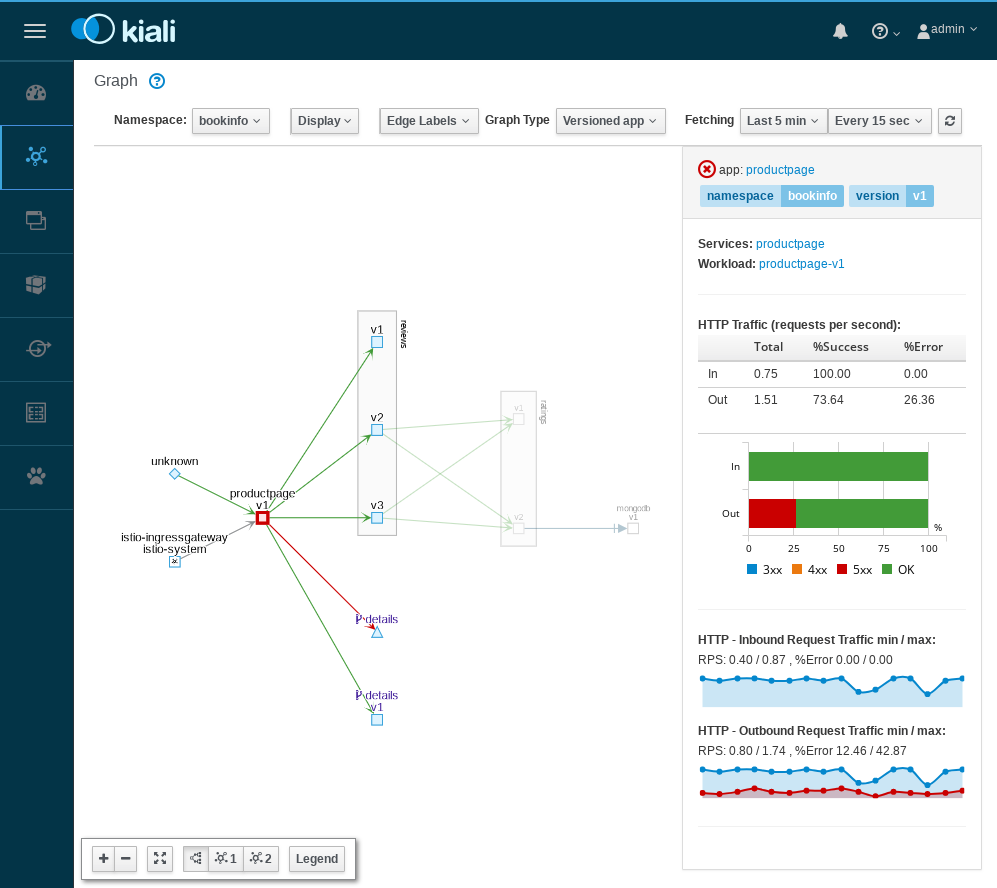
Timeouts & Retries
Web
Service Foo
Timeout = 600ms
Retries = 3
Timeout = 300ms
Retries = 3
Timeout = 900ms
Retries = 3
Service Bar
Database
Timeout = 500ms
Retries = 3
Timeout = 300ms
Retries = 3
Timeout = 900ms
Retries = 3
Deadlines
Web
Service Foo
Deadline = 600ms
Deadline = 496ms
Service Bar
Database
Deadline = 428ms
Deadline=180ms
Elapsed=104ms
Elapsed=68ms
Elapsed=248ms
Service Mesh Deployment Models
If we have time...
Client
Edge Cache
Istio Gateway
(envoy)
Cache Generator
Collection of VMs running APIs
service mesh
Istio VirtualService
Istio VirtualService
Istio ServiceEntry
Situation:
- existing services running on VMs (that have little to no service-to-service traffic).
- nearly all traffic flows from client to the service and back to client.
Benefits:
- gain granular traffic control (e.g path rewrites).
- detailed service monitoring without immediately deploying a thousand sidecars.
Ingress
Out-of-band telemetry propagation
Application traffic
Control flow
Proxy per Node
Service A
Service A
Service A
linkerd
Node (server)
Service A
Service A
Service B
linkerd
Node (server)
Service A
Service A
Service C
linkerd
Node (server)
Advantages:
-
Less (memory) overhead.
-
Simpler distribution of configuration information.
-
primarily physical or virtual server based; good for large monolithic applications.
Disadvantages:
-
Coarse support for encryption of service-to-service communication, instead host-to-host encryption and authentication policies.
-
Blast radius of a proxy failure includes all applications on the node, which is essentially equivalent to losing the node itself.
-
Not a transparent entity, services must be aware of its existence.
layer5.io/books
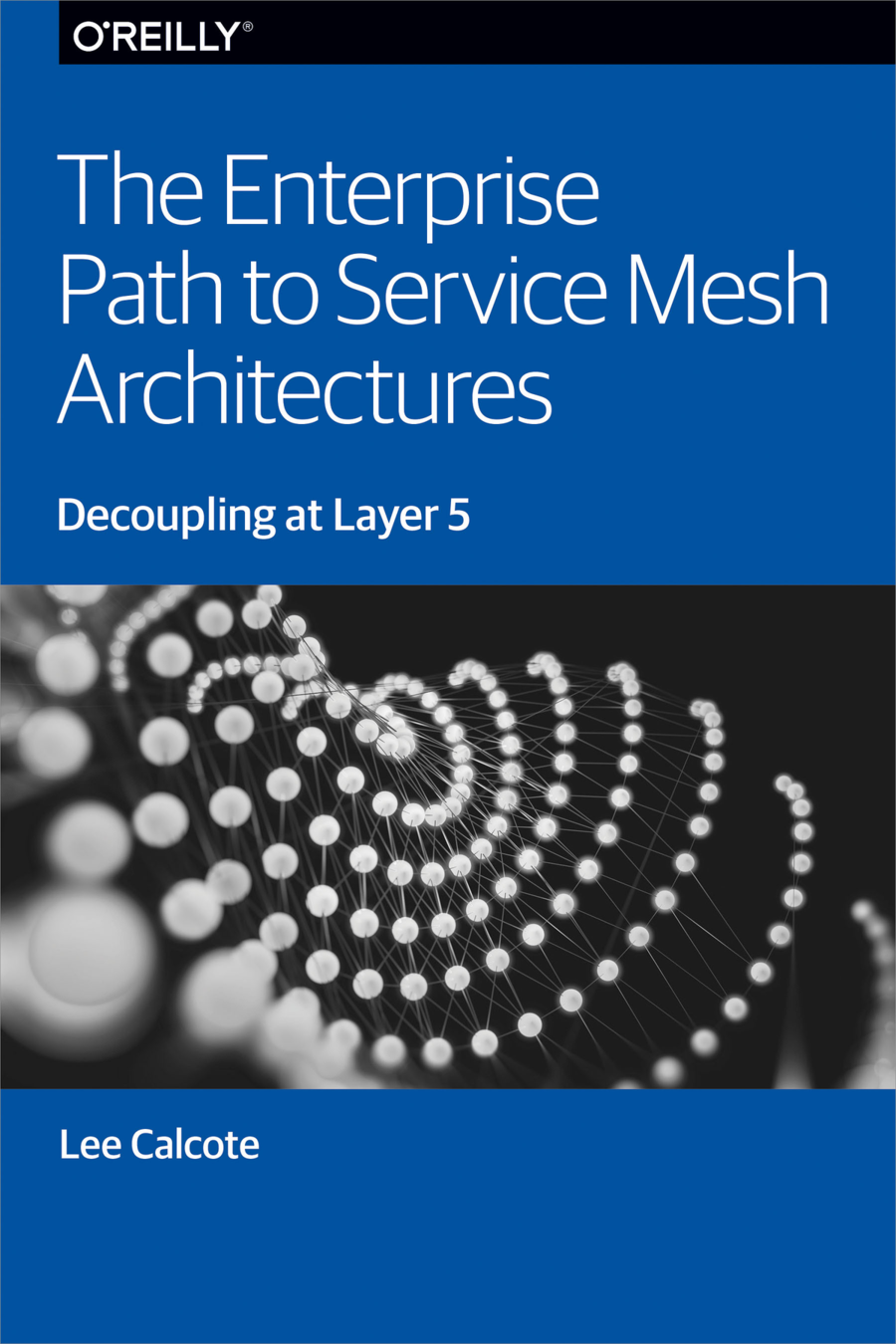
Advantages:
-
Good starting point for building a brand-new microservices architecture or for migrating from a monolith.
Disadvantages:
-
When the number of services increase, it becomes difficult to manage.

Router "Mesh"

Fabric Model
Advantages:
-
Granular encryption of service-to-service communication.
-
Can be gradually added to an existing cluster without central coordination.
Disadvantages:
-
Lack of central coordination. Difficult to scale operationally.

Ingress or Edge Proxy
Advantages:
-
Works with existing services that can be broken down over time.
Disadvantages:
-
Is missing the benefits of service-to-service visibility and control.
Configuration
Security
Telemetry
Control Plane
Data
Plane
service mesh ns
Foo Pod
Proxy Sidecar
Service Foo
Foo Container
Bar Pod
Proxy Sidecar
Service Bar
Bar Container
Out-of-band telemetry propagation
Control flow
Application traffic
application namespace
Istio v1.0 Multi-Cluster
Ingress Gateway
kube-api
kube-system
Barz Pod
Proxy Sidecar
Service Bar
Baz Container
application namespace
kube-api
kube-system
LOCAL CLUSTER
REMOTE CLUSTER
Egress Gateway
injector
Shared Root CA




